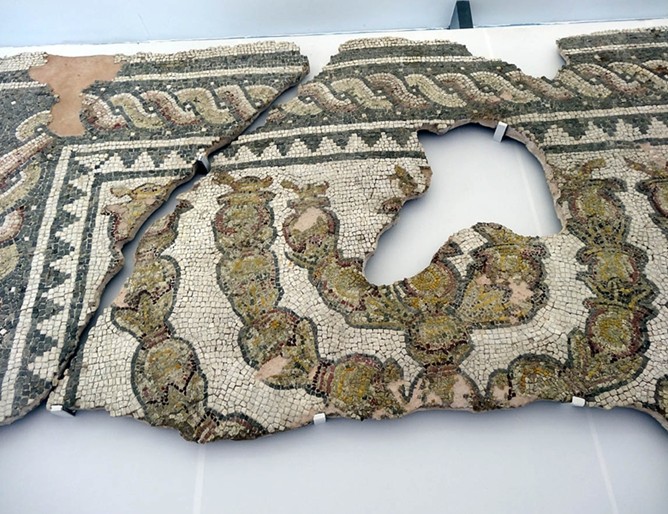Time and Location
Mondays, Wednesday, and Thursdays, from 9:35 to 10:25
Flint 111
Description
The medieval history of Eastern Europe is poorly represented in today’s scholarly work published in English. Scholarly interest in Eastern Europe focuses especially on the nineteenth and twentieth centuries, the period of nationalism. The medieval history of the area is given comparatively less attention, which often amounts to slightly more than total neglect. For most students in medieval studies, Eastern Europe is marginal and East European topics simply exotica. The same is true to an even greater degree about the medieval history of the East European Jewry. The East European Jews make up about 90 percent of all Ashkenazi (“German-rite”) Jews in the world, and about the same percentage of all Jewish people in the United States have Ashkenazi ancestors. Some have long maintained that the presence of the Ashkenazim in Eastern Europe is the result of medieval immigration, but others have recently raised the possibility of local origins of at least some of the Ashkenazi Jews of Eastern Europe. Still others point to the Slavic features of Yiddish, while many Karaites of Eastern Europe insist on the difference between them and Karaites anywhere else in the world. Neither Sephardim nor Ashkenazim had any state traditions in the Middle Ages that could be compared to those associated with the conversion of the Khazars in late 8th or early 9th century. In the 13th century, the Jews enjoyed (if only temporarily) a privileged position in Christian Hungary that had no parallel anywhere else in Europe outside al-Andalus. To many historians of medieval Jewry, the history of the Jews in Eastern Europe begins with the Ashkenazi immigrants of the 12th and subsequent century, but there is much (and very rich) Jewish history in that part of Europe long before that. Who were those peoples? What made them so difficult to represent by the traditional means of Western historiography? What historical circumstances separate the Western from the Eastern half of the European continent? What social structures and political institutions were responsible for the specific developments in the medieval history of the area? How were Jewish communities formed in that region and under what circumstances did they come into being? Above all, this course aims to answer some of these questions. Following a chronological order, we will look, each week, at the questions and problems raised by the study of the Jews in Eastern Europe, and at some of the primary sources from which historians draw their analysis.
Textbooks
All readings–primary sources, articles and chapters–are available in pdf format on Canvas (elearning.ufl.edu/). You are required to check the course page on Canvas regularly for updates.
Assignments and grading policies
There is no attendance policy, but you are responsible for attending all lectures and reading the required texts. Class participation may be taken into account to determine the overall grade. The basis for evaluation of performance will be a reading journal and five in-class assignments. Below is a detailed description of these assignments and the corresponding percentages of your final grade. Extra-credit work will be accepted only for students with active participation in class discussions. If necessary, I will explain the format of the extra-credit option during regular office hours. You are otherwise encouraged to keep in touch with me by e-mail, if you have any questions: I check my mailbox regularly, and promise to answer quickly.
Reading journal. A quick glimpse at the list of weekly topics (see below) will no doubt convince you that this is a course with serious readings. You will be expected to digest a substantial amount of information in a fairly short period of time. The best way to do this is to keep a journal. Before every class meeting, you will post an e-mail message on my address (on top of this syllabus), in which you will discuss briefly the readings for the coming meeting, ask questions and/or make comments, raise issues that need clarification, etc. All e-mails should arrive at least 12 hours before class meetings. Be sure to keep your postings to a reasonable length (175 to 250 words long). I do not want you to spend too much time on them, but I expect you to give an articulate presentation of your thoughts. Needless to say, I also expect you to check on correct grammar and spelling before clicking on “Send.” Because the journal is designed to demonstrate your efforts towards an initial understanding of the readings, I must have in time one report for each class meeting, every week. The reading journal represents seventy percent of your final grade, 1.8% for each entry (each bullet point in the list of weekly topics followed by “Read:”). I will send written feed-back (via e-mail) on weekly entries midway through the term. Reading reports cannot be made up; you simply need to have a journal entry for every class meeting. Be aware that missed reports may result in a substantially lower grade.
In-class assignments. The remaining thirty percent of your final grade will be based on five short assignments in class. All five will consist of multiple-choice, map, matching, short-essay questions, or a combination thereof. Besides material covered in class lectures, the in-class assignments will focus primarily on problems raised in the readings. A careful study of these texts is necessary for a good performance at the test. Because in-class assignments are announced, I do not intend to grant any make-ups, except for emergencies (e.g., illness), in which case I may ask for official justification.
The following scale will be used in determining your final grade.
| Points | Grade |
| 97-100 | A |
| 93-96 | A- |
| 88-92 | B+ |
| 81-87 | B |
| 75-80 | B- |
| 68-74 | C+ |
| 61-67 | C |
| 55-60 | C- |
| 48-54 | D+ |
| 41-47 | D |
| 35-40 | D- |
| under 30 | E |
